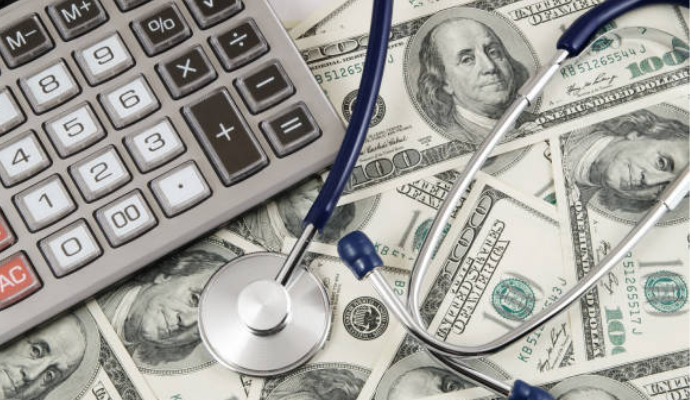Hospital Revenue Fell as Expenses Increased Amid Omicron Surge
Hospitals delayed nonurgent care during the Omicron surge in January, which led to declines in revenue and increased expenses.

Source: Getty Images
- As expenses continued to rise, hospitals experienced sudden declines in revenue, operating margins, and outpatient volumes during January 2022 amid the Omicron surge, according to Kaufman Hall’s National Hospital Flash Report.
The Kaufman Hall report analyzed financial performance data from more than 900 hospitals. The most recent data reflects January 2022 hospital performances.
The weekly moving average of new COVID-19 cases increased substantially in the first two weeks of the new year, from 417,524 on January 1 to 807,115 on January 15. Hospitals saw a corresponding increase in new daily admissions during these two weeks, going from 14,017 to 21,622.
To keep up with the high volumes of COVID-19 patients and limit the spread of the Omicron variant, health systems and providers paused nonurgent procedures, which caused operation margins to decline.
The median operating margin index for January, before CARES Act funding, was -3.68 percent. This indicates a 71.3 percent decline from December 2021 to January 2022 and a year-over-year decline of 23.7 percent. Compared to pre-pandemic margins, the operating margin index was down by 73.3 percent.
After accounting for federal funding, the median operating margin was -3.3 percent, declining 80.7 percent month-over-month and 23.8 percent year-over-year.
After temporarily halting nonurgent procedures, hospitals saw a drop in outpatient care. Operating room minutes decreased by 15.7 percent from December to January and were down 20.4 percent compared to pre-pandemic levels, according to the report.
This reduction in outpatient care contributed to revenue declines, the report revealed. Outpatient revenue fell 7.5 percent from December to January, leading to a 4.7 percent decline in gross operating revenue. However, compared to January 2021, gross operating and outpatient revenue were up by around 9 percent.
Meanwhile, inpatient stays and length of stay increased. From December to January, patient days jumped 1.7 percent while the average length of stay rose 8.6 percent. Compared to pre-pandemic times, the average length of stay was up by 17.2 percent.
The boost in inpatient visits had a modest impact on revenue, with inpatient revenue increasing by 2.7 percent month-over-month and 9 percent year-over-year.
Adjusted discharges declined 10.4 percent from December to January but stayed relatively flat year-over-year with a 0.3 percent increase. Emergency department visits also fell 1.4 percent month-over-month but were up 20.7 percent compared to January 2021.
Hospital expenses continued to rise this year as the industry faced ongoing workforce shortages and global supply chain issues. The total expense per adjusted discharge increased 11.6 percent in January, resulting from a 14.6 percent increase in labor expenses. Compared to last January, the total expense was up 10.9 percent, and labor expense per adjusted discharge was up 14.2 percent.
Non-labor expense per adjusted discharge grew as well, seeing a 7.8 percent increase from December to January and a year-over-year increase of 5.9 percent, the report found.
Hospitals have seen a significant increase in expenses since the start of the pandemic, with total expense per adjusted discharge increasing 43.5 percent since January 2020. Labor and non-labor expenses were up 57 and 35.5 percent, respectively, since before the pandemic.
Experts said that the poor financial performances hospitals saw may have a lasting impact for the remainder of the year.
“Our nation’s hospitals and health systems had a very difficult month to start the year,” Erik Swanson, senior vice president of Data and Analytics at Kaufman Hall, said in a press release. “While COVID-19 cases have swiftly declined since peaking in mid-January, the effects of the sudden and sizable margin and outpatient volume declines will be felt throughout 2022.”
According to Kaufman Hall data from December 2021, adjusted discharges, patient days, and the average length of stay were higher at the end of the year than in 2020. However, unlike in January 2022, hospitals saw slight month-over-month increases in gross operating and outpatient revenue.
